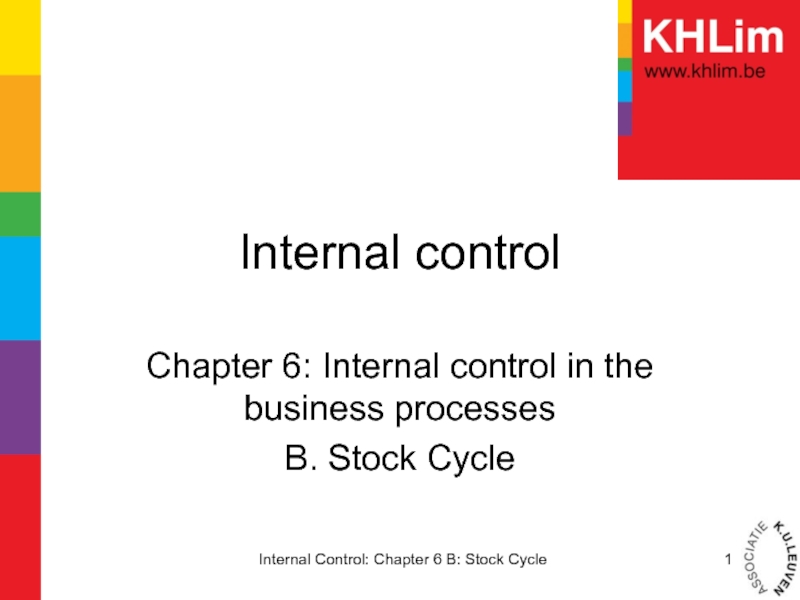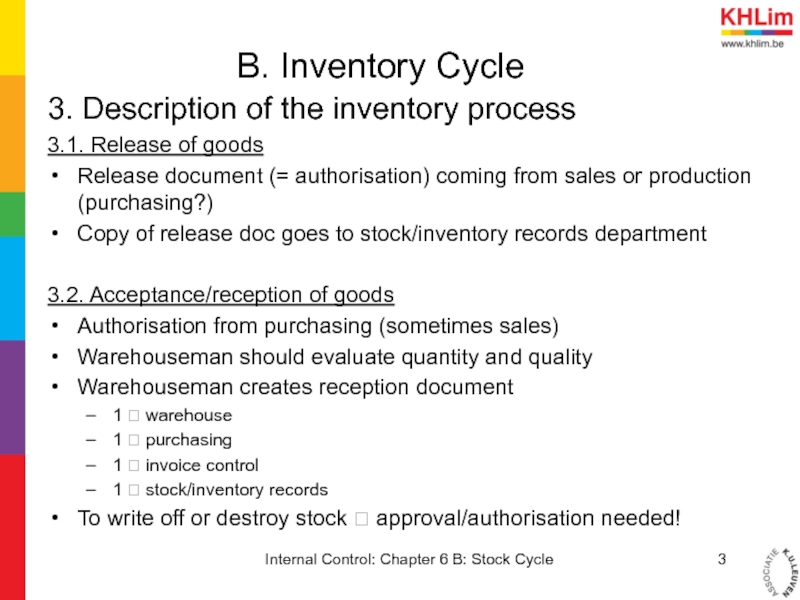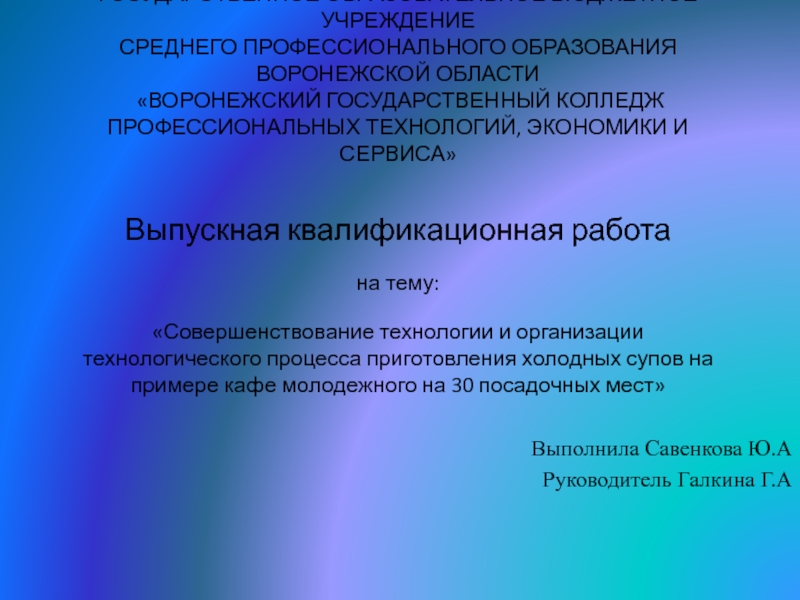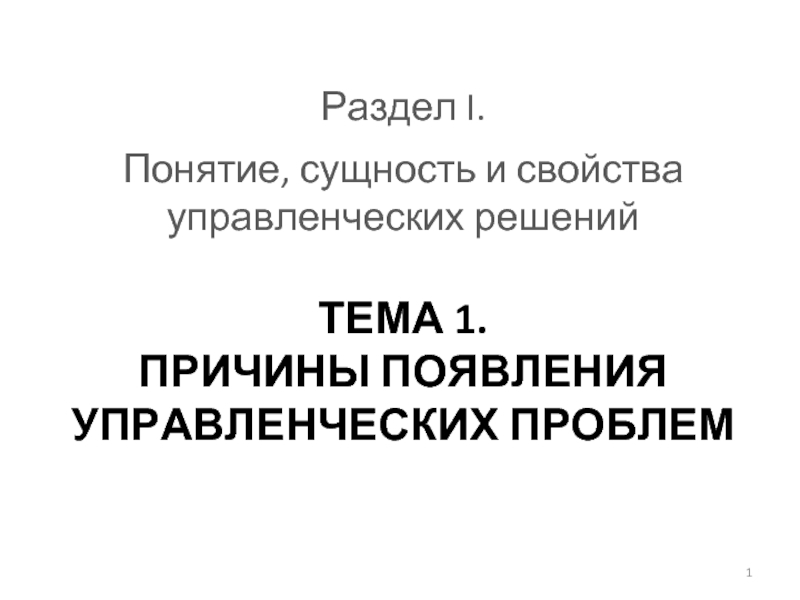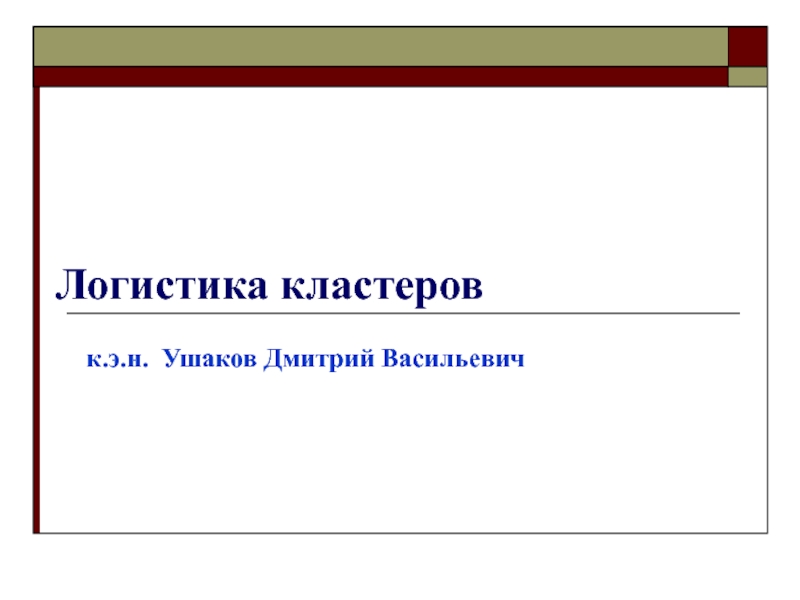- Главная
- Разное
- Дизайн
- Бизнес и предпринимательство
- Аналитика
- Образование
- Развлечения
- Красота и здоровье
- Финансы
- Государство
- Путешествия
- Спорт
- Недвижимость
- Армия
- Графика
- Культурология
- Еда и кулинария
- Лингвистика
- Английский язык
- Астрономия
- Алгебра
- Биология
- География
- Детские презентации
- Информатика
- История
- Литература
- Маркетинг
- Математика
- Медицина
- Менеджмент
- Музыка
- МХК
- Немецкий язык
- ОБЖ
- Обществознание
- Окружающий мир
- Педагогика
- Русский язык
- Технология
- Физика
- Философия
- Химия
- Шаблоны, картинки для презентаций
- Экология
- Экономика
- Юриспруденция
Internal control and deontology - Chapter 6 B. Stock Cycle презентация
Содержание
Слайд 1Internal control
Chapter 6: Internal control in the business processes
B. Stock Cycle
Internal
Слайд 2B. Inventory cycle
1. Risks regarding stock/inventory
Not being able to produce/deliver in
Excess stock
Theft, damaging, ageing
Incorrect registration of stock movements
2. The warehouse
Centralized or decentralized
Conditions that have to be met:
Closed/secured area
Only release and acceptance when authorized
Warehouseman needs to have information about stock movements
Open warehouse
Internal Control: Chapter 6 B: Stock Cycle
Слайд 3B. Inventory Cycle
3. Description of the inventory process
3.1. Release of goods
Release
Copy of release doc goes to stock/inventory records department
3.2. Acceptance/reception of goods
Authorisation from purchasing (sometimes sales)
Warehouseman should evaluate quantity and quality
Warehouseman creates reception document
1 ? warehouse
1 ? purchasing
1 ? invoice control
1 ? stock/inventory records
To write off or destroy stock ? approval/authorisation needed!
Internal Control: Chapter 6 B: Stock Cycle
Слайд 4B. Inventory Cycle
3. Description of the process
3.3. Keeping track of mutations
Independent
2.3.4. Stock/inventory records
Administration of stock items – quantity and value
Purpose:
Being able to permanently determine the theoretical stock ? to calculate cost of goods sold ? intermediate result
Keeping track of stock mutations to determineand evaluate the correctness and value of the stock
Provide purchasing, sales and production with information regarding stock (levels and value)
Provide ‘invoicing’ with information
Indicating excess stock and aged/obsolete stock
Role: applying valuation methods to stock (Lifo, Fifo, …)
Internal Control: Chapter 6 B: Stock Cycle
Слайд 5B. Inventory Cycle
2.4. Inventory – stock count
To check whether the stock
By warehouseman, together with someone from a financial or controlling department (not stock
Differences should be explained
Stock records should be adjusted
Methods
Partial rolling stock count
Full stock count
Internal Control: Chapter 6 B: Stock Cycle
